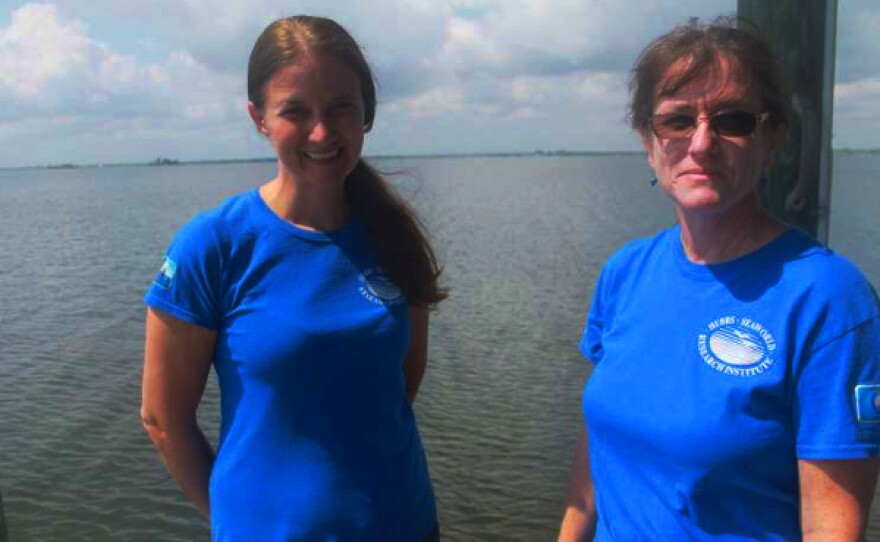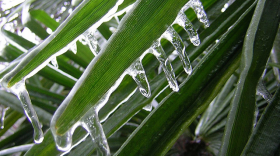This spring’s stunning fish kill was the latest distressing bellwether for the Indian River Lagoon. It came three years after die-offs of dolphins, pelicans and manatees. Their deaths remain a mystery.
The dead dolphins were turning up on the shores of the Indian River Lagoon with peanut heads. That’s how scientists describe dolphins so emaciated their shrunken heads and necks take the shape of peanuts. Grieving mothers pushed dead calves until the carcasses sank.
Wendy Noke Durden was there.
“At times I think the most we had, we had two or three moms pushing babies at the same time. We had two moms pushing their dead calves together. It’s just incredibly upsetting.”
Durden monitors the lagoon’s dolphins for the Hubbs-SeaWorld Research Institute in Melbourne. She is near tears remembering the record number of dolphins that died a few years ago along with large numbers of pelicans and manatees.
Scientists like Durden are worried about more die-offs after the worst fish kill in the Indian River Lagoon in modern history. But that isn’t happening, at least not now. Fewer dolphins have died this year.
Megan Stolen is another dolphin expert at the Hubbs-SeaWorld Research Institute. She says the reason depends on whether you’re a glass-half-full or glass-half-empty person. If you’re a glass-half-full person fewer dead dolphins means the lagoon’s condition isn’t as bad as it could be. But if you’re a glass-half-empty person:
“It kind of makes you think that maybe they’re not having as many kids as they should have because we’re not finding dead calves like we normally would,” she says. “And if their population was really depleted then you wouldn’t get as many dead animals.”
A collapsing algal bloom caused the fish kill by sucking all of the oxygen out of the water, suffocating the fish. Some 65,000 pounds were disposed of as presumably many more dead fish sunk and decayed on the bottom. But scientists don’t know why this bloom triggered such a widespread die-off when a bloom of the same algal species a few years ago did not.
That bloom combined with a super bloom of multiple algal species are believed to be responsible for the dolphin, pelican and manatee deaths, but scientists aren’t sure how. Stolen says with no significant change in fish populations at the time it’s not clear why the dolphins died of emaciation.
She believes a perfect storm of environmental factors led to their deaths.
“And they essentially couldn’t feed or got too sick to feed. Or the fish weren’t the right kind of fish in the right kind of place, and they basically became emaciated and died.”
Tim Chastain powers his kayak toward a sun-soaked Banana River. A pelican swoops low. Dolphins take turns chuffing air.
“Other events like manatee deaths and dolphin deaths and smaller fish kills – this isn’t the first fish kill we’ve had – you can chalk it up and say, well, the resilience of the lagoon is going to take care of it. We’re going to do better. We’re going to bounce back. But the magnitude of this fish kill was greater than anything we’ve ever seen before.”
Chastain is a Cocoa Beach resident and retired eco-tourism business operator. He has spent nearly all of his life along the Indian River Lagoon and is wistful remembering the magic carpet ride kayaking used to be, as the shadow of his boat moved among the marine life below.
Chastain pauses and watches dolphins and pelicans hunt for fish. It is now a different view of the lagoon, considered the most biologically diverse estuary in North America.
“You gotta admit that your boat still floats on this water. When the sun sets it still reflects off this water. So it’ll be hard to take all of the lagoon’s saving graces away.”










